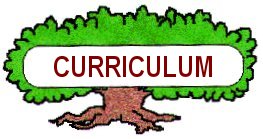

Home Page |
MICHIGAN FORESTS FOREVER TEACHERS GUIDE
| TREE ID KEYS |  |
The following key also can be found in Michigan State University Extension Publication E-2332 "Identifying Trees of Michigan". Copies can be purchased through any MSU County Extension office. For a more complete key targeting trees species of the Upper Peninsula, click here. The U.P. Tree ID Key website will also be useful in the northern Lower Peninsula and northern Wisconsin.
A dichotomous key is used to identify tree and plants, as well as many other groups of things in the natural world. It works by providing a series of choices, which the user follows through to the end. By the process of elimination, the correct identification can be made. Reading keys requires practice, especially in the beginning. They are a good way to exercise careful observation and reading skills.
Basic Key for Michigan (scroll down)
More comprehensive keys focusing on the Upper Peninsula
Coniferous Trees
Summer Key for Deciduous Trees (uses leaf characteristics)
Winter Key for Deciduous Trees (does not use leaf characteristics)
Leaf-only Key
Key to Identifying Trees of Michigan
I. Trees with needle-like or scale-like leaves; fruit a cone, or cone-like (conifers).
A. Leaves needle-like
1. Leaves in bundles or on clusters
a) Leaves in bundles
(1) Leaves or needles in 5s .................................................................................. White Pine
(2) Leaves or needles in 2s
(a) Leaves 4-to 6-inches long............................................................................ Red Pine
(b) Leaves 1-to 2-inches long........................................................................... Jack Pine
b) Leaves in clusters, soft and flexible, shed in fall.................................................... Tamarack
2. Leaves not in bundles
a) Leaves flattened
(1) Leaves ½-inch long, cones ½-to ¾-inch long and hang free............................ Hemlock
(2) Leaves ¾-inch long, cones 2-to 3-inches and erect..................................... Balsam Fir
b) Leaves four sided
(1) Branchlets smooth, needles ill-scented, 1-to 2-inch cones...................... White Spruce
(2) Branchlets hairy, short needles pleasantly scented, ½-to ¾-inch cones........Black Spruce
B. Leaves scale-like
1. Branchlets flattened in fan-like sprays, fruit reddish brown.................... Northern White-Cedar
2. Branchlets 4 angled, not in fan-like sprays, fruit berry-like and dark blue............... Eastern Redcedar
II. Trees with broad, flat leaves of many shapes and patterns (broadleaf trees).
A. Leaves compound
1. Opposite
a) Palmately compound; seven leaflets............................................................. Horse Chestnut
b) Pinnately compound
(1) Leaf margins entire or finely toothed, leaflets distinctly petioled; fruit a single samara.....Ashes
(2) Leaf margins coarsely toothed or lobed, leaflets somewhat petioled or sessile; fruit a double samara...... Boxelder
2. Alternate
a) Leaflets small, less than 2 inches long; fruit a pod, branches with thorns..................... Honeylocust
b) Leaflets large, more than 2 inches long
(1) Fruit, a pod, 4 to 10 inches long, reddish brown....................................... Kentucky Coffee Tree
(2) Fruit a drupe, 3/16 inches on an erect conical cluster.............................. Staghorn Sumac
(3) Fruit a nut; twig pith chambered
(a) Pith, buff colored............................................ Black Walnut
(b) Pith, chocolate colored.................................. Butternut
(4) Fruit a nut; twig-pith homogeneous.................... True Hickories
B. Leaves simple
1. Opposite
a) Leaves lobed (star-like); fruit a samara.................................................................... Maples
b) Leaves not lobed
(1) Large, heart-shaped; fruit a cylindrical pod 6 to 14 inches long....................... Catalpa
(2) Small to medium, ovate; fruit a red berry, borne in clusters........................... Dogwood
2. Alternate
a) Leaves lobed or notched
(1) Leaves as wide as they are long
(a) Twigs and leaves aromatic, leaves of three forms; entire, mitten-shaped and
3-lobed............................................................................................................. Sassafras
(b) Twigs and leaves not aromatic, leaves of one form
i) Leaf margin entire, four lobed; flower tulip-shaped............................... Yellow Poplar
ii) Leaf margins not entire
[a] Leaf margin finely to coarsely toothed, petioles laterally flattened............ Cottonwood, Aspen, Poplars
[b] Leaf mitten-shaped, twigs zig-zag; fruit edible............................................ Mulberry
[c] Leaf one form, pointed lobes, hollow petiole at base; old bark peels in thin
curled piece.................................................................................................. Sycamore
(2) Leaves longer than wide
(a) Leaves medium to large, fruit an acorn
i) Leaves bristle tipped, inside of acorn shell hairy; kernel bitter........Red or Black Oaks
ii) Leaves rounded; inside of acorn shell smooth; kernel sweet......... White Oaks
b) Leaves not lobed or notched
(1) Leaves with unequal bases, one-sided as to midrib position
(a) Margins doubly serrated............................................................................ Elms
(b) Margin not doubly serrated
i) Leaf heart-shaped; fruit a small woody nut subtended by a leaf-like blade......... Basswood
ii) Leaf ovate; fruit a small dark red drupe, corky bark........................... Hackberry
(2) Leaves with equal-base (not one-sided)
(a) Leaf margin entire
i) Leaf heart-shaped; fruit a legume............................................................ Redbud
(b) Leaf margin not entire
i) Spiny, toothed or bristle-like at the end of each vein; fruit a nut
[a] Bark smooth, blue gray; terminal bud long, pointed; fruit a small triangular nut Beech
ii) Margin finely or doubly serrated
[a] Margin finely serrated
(i) Fruit fleshy, leaves finely toothed, fruit a one-seeded drupe.................... Cherries
(ii) Fruit not fleshy, leaf petiole short, leaves lance-shaped with long tapered tips....... Willows
[b] Margin doubly serrated
(i) Bark white and peeling........................................................................ Paper Birch
(ii) Bark white and tight to tree................................................................... Gray Birch
(iii) Bark yellow and peeling, wintergreen taste...................................... Yellow birch
 |
This website was developed and created by Michigan State University Extension for the teachers of the State of Michigan. |
Page Name:
Curriculum/SupportDocs/IDkeys.htmI